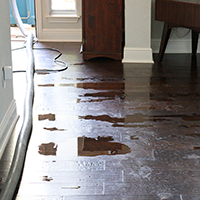We have noticed this great article involving Preventing Water Damage in the Bathroom down the page on the internet and felt it made perfect sense to share it with you in this article.

The washroom is extremely susceptible for damp buildup and potential water damage because of the constant use water in it. This article offers easy assessment methods to assist identifying water damage hazards.
The frequent use of water in the bathroom makes it incredibly susceptible for damp buildup and also possible water damages. By evaluating it consistently, you can lower water related damages.
The following collection of inspections is easy to perform and should be done once in every three months in order to keep your bathroom in good shape and to prevent potential water damages caused by the bathtub, the shower, pipe joints and also plumbing, sinks, closets, and also the commode
Do not forget executing these examinations and also be complete while doing them. Bear in mind that these basic assessments can save you a lot of cash by giving very early indicators for water damage
Sinks and Cabinets
Sinks and closets are revealed to dampness as well as humidity daily and also are usually ignored. Check frequently under the sink and on the countertop over it. Fix any type of drip in the trap as it might recommend drain problems. Check out the sink, slow-moving draining pipes may show an obstructed drain. Replace sink seals if they are fractured or loosened.
Bathtub and also Shower
The shower and also tub require unique interest and upkeep. Inspect the tiles and also change if cracked. See to it that there is no missing out on grout in between the ceramic tiles. Inspect and also replace cracked caulking at joints where the wall surfaces satisfy the flooring or the tub. Clogged drains pipes as well as pipelines issues will protect against the tub from drying out as well as might suggest serious issues beneath the bath tub. Speak with a specialist right away to prevent architectural damage. Focus on discolorations or soft locations around the bathtub wall surfaces as they may suggest an internal leak.
Plumbing
Signs for water damages are difficult to identify considering that most pipelines are installed inside the wall surfaces.
Pay unique interest to floor covering as well as wall surfaces moisture as well as stains as they may show an unnoticeable plumbing trouble. Check dampness levels in adjoining areas too.
The Toilet
The bathroom is a vulnerable water junction. Examine the water lines and look for leakages around the toilet seat, in the pipe, and also under the water storage tank. If you find any indications of dampness on the floor around the bathroom, look for leakages in the toilet rim as well as container seals.
Be aware that hanging bathroom dish deodorants enhances the opportunities for clogs.
Water Damage Signs In The Bathroom To Avoid Cleanup
Musty smell
This is one of the easiest signs to catch because musty smells are so odorous. The damp, earthy, moldy smell should be a big red flag. The smell will develop when moisture gets trapped in surfaces, and begins to facilitate mold growth. Leaking pipes under cabinets, inside walls, and behind shower fixtures will cause moisture to stay trapped and not dry, which will lead to mold growth and spread. As soon as you notice any musty smells in your bathroom, have it checked for hidden water damage and cleanup signs.
Visible mold
If the smell isn’t there to give it away, sometimes you will actually see mold growth. Finding mold in your bathroom is a serious problem, because mold is very harmful to your health. By the time mold growth is visible, it also means that water damage has already occurred and been present for some time. The only way the mold problem can be resolved is to find the source of the moisture and get it stopped. To safely and adequately remove mold, you need to have professionals handle the remediation. Do not waste any time in getting mold problems addressed, fixed, and sanitized so that you can protect you and your family from the many respiratory symptoms caused by mold exposure.
Damaged floors
Bathroom floors should be able to withstand some exposure to water while still remaining in good condition. However, when excess exposure or water leaks occur, they will begin to damage even the most water-resistant flooring. If you notice any cracking, bubbling, staining, or warping on your bathroom floors, there is probably a water leak somewhere causing the distortion. If you notice areas of the floor have become softer, or even have a spongy feeling, there is probably damage to the subfloor. Subflooring is typically made up of plywood. When plywood is exposed to water or moisture, it will absorb it. Once it has become saturated, the weight of the excess water will cause the wood to swell and soften. Check the floors in your bathroom frequently to catch any of these sings before they lead to damaged subflooring.
Changes on walls
When water leaks behind walls, it will cause changes in the drywall. Peeling plaster, blistering paint, and soggy wallpaper are all good indicators that excess water is building up behind the wall. Water leaking behind drywall will cause it to swell and be soft to the tough. If you start to notice gaps along the trim of your walls, or where tile meets the wall, it could also be a strong indicator that there is a leak behind the wall. Any changes, distortion, or damage on the walls should be evaluated as soon as you notice it to prevent further water damage and cleanup.

I ran across that blog entry on How to Prevent Bathroom Water Damage while scouting around the search engines. Do you know anybody else who is sincerely interested in the niche? Take a moment to promote it. Thanks a lot for your time invested reading it.
Schedule Today